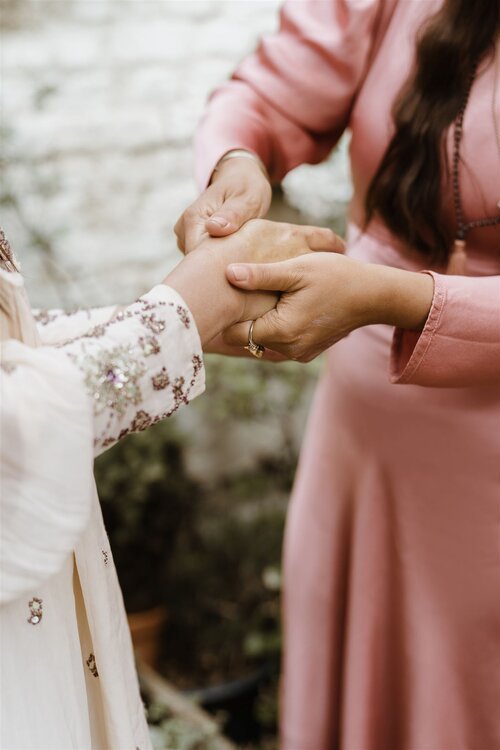Reiki: The Healing Touch of Universal Energy
In a world brimming with stress and chaos, people are increasingly seeking solace in holistic and alternative healing practices. One such practice that has been gaining momentum in recent years is Reiki. Often described as the "laying on of hands," Reiki is a beautiful and powerful healing modality that taps into universal energy to restore balance and harmony within the body, mind, and spirit. In this blog post, we will embark on a journey to explore the essence of Reiki, its origins, how it works, and the profound impact it can have on our lives.
The Roots of Reiki
Reiki, pronounced "ray-kee," is a Japanese word that translates to "spiritual energy." It was developed by Mikao Usui in the early 20th century. Usui's quest for a healing method led him to a spiritual awakening on Mount Kurama, where he received the sacred symbols and knowledge that underpin Reiki. Thus, Reiki is both a technique and a spiritual practice, marrying ancient wisdom with modern healing.
The Universal Life Force Energy
At the heart of Reiki lies the belief in a universal life force energy that permeates everything. Practitioners channel this energy, also known as "Ki" or "Chi," through their hands to the recipient. It is the same energy that flows through acupuncture and qigong, albeit with its unique Reiki characteristics. This energy is gentle, subtle, and intelligent, making it perfectly suited for holistic healing.
How Reiki Works
Reiki practitioners are attuned to this universal energy by Reiki Masters. They then use specific hand positions and symbols to direct this energy to the recipient, promoting relaxation, reducing stress, and facilitating healing. The recipient remains fully clothed during a session, lying down or seated, while the practitioner gently places their hands on or near the body.
Reiki's Healing Benefits
Reiki is not limited to physical healing; it works on the whole being, addressing mental, emotional, and spiritual aspects as well. Some of the benefits of Reiki include:
Stress Reduction: Reiki's soothing touch relaxes the body and mind, helping to alleviate stress and anxiety.
Pain Management: It can be effective in reducing pain and discomfort, often used as a complementary therapy.
Emotional Healing: Reiki can release emotional blockages and promote emotional balance.
Enhanced Well-being: Many recipients report a sense of inner peace, improved sleep, and a general feeling of well-being after a Reiki session.
Spiritual Connection: Reiki enhances one's connection to their inner self and the spiritual aspect of life.
The Universal Nature of Reiki
One of the most beautiful aspects of Reiki is its inclusivity. Reiki is not bound by any specific belief system or religion. It transcends cultural and spiritual boundaries, making it accessible and beneficial for anyone who seeks healing, harmony, and balance.
Embracing the Healing Touch of Reiki
In a world that often seems frenetic and disconnected, Reiki provides a serene and deeply spiritual way to reconnect with the healing power of the universe. It reminds us that the wisdom and energy needed for healing are not external but inherent within us all. By opening ourselves to the healing touch of Reiki, we unlock the potential for a more balanced, harmonious, and enriched life.
Reiki is not just a healing modality; it's a journey of self-discovery and a reminder of the interconnectedness of all life. By embracing the gentle and loving touch of universal energy, we invite healing, peace, and wholeness into our lives. Reiki beautifully encapsulates the idea that healing is not merely a physical endeavor but a profound union of body, mind, and spirit. As we explore the healing art of Reiki, may we find solace in its transformative power and the beauty of its universal embrace.
Reiki symbols are an essential part of Reiki practice, particularly in the Usui Reiki tradition. They are sacred symbols used by Reiki practitioners to focus and amplify the flow of healing energy during a session. These symbols are typically taught to Reiki practitioners during their training, and their specific meanings and uses may vary slightly among different Reiki traditions. Here are some of the main Reiki symbols and their meanings in the Usui Reiki system:
Cho Ku Rei (Power Symbol):
Meaning: This symbol is used to increase and direct the flow of Reiki energy. It's often referred to as the "power symbol" and is used to empower and protect.
Sei Hei Ki (Mental/Emotional Symbol):
Meaning: The Sei Hei Ki symbol is associated with mental and emotional healing. It is used to help clear emotional blockages and balance the mind.
Hon Sha Ze Sho Nen (Distance Symbol):
Meaning: This symbol is primarily used for distant healing, allowing Reiki energy to transcend time and space. It connects the practitioner with the intended recipient.
Dai Ko Myo (Master Symbol):
Meaning: The Dai Ko Myo symbol is often considered the symbol of enlightenment or the "master symbol." It is associated with spiritual healing and the highest level of Reiki energy.
Raku (The Fire Serpent):
Meaning: This symbol is used in some Reiki traditions to complete a session and ground excess energy. It's also called the "fire serpent" symbol.
The meanings and usage of these symbols may be kept confidential by some Reiki practitioners and teachers as part of the traditional practice. It's important to note that symbols in Reiki are believed to have inherent energy and can be used effectively by practitioners who have been attuned to them. However, the specific interpretations and uses of these symbols can vary between different Reiki lineages and teachers.
Some of the images used in this content have been sourced from Pinterest for illustrative purposes. Due to the nature of Pinterest and the widespread sharing of images, it may not always be possible to provide proper attribution or credit to the original creators of these images. All images have been selected from our saved boards and can be viewed at your leisure.








